Things to do in Transylvania
In the heart of Romania, surrounded by Carpathian mountain range is the historical and mythical region of Transylvania. An intriguing part of the country with unparalleled attractions, Transylvania draws in visitors of all kinds for a unique European holiday.
The charms of Transylvania entice people with the imagery of haunted forests, medieval towns, vampires, turreted cliff-top castles, and the legends of Dracula. But in addition to its medieval castles and enchanting historic towns, the region also offers dramatic alpine scenery of the Carpathian Mountains with spectacular skiing and undisturbed hiking opportunities.
A definite must-see when in the region is the Peles Castle, considered to be one of the finest castles in Europe. The views from the castle are incredible and for lovers of Neo-Renaissance architecture and sculpture, the castle certainly delivers.
A trip to Transylvania would not be complete without exploring Bran Castle, the inspiration behind Bram Stoker's novel, Dracula. Here visitors will be exposed to striking architecture and historical artefacts, as well as experience what it means to be in the land of Dracula! While visiting Bran Castle, it's certainly worth visiting the archetypal medieval town of Brasov. This wonderfully European town is known for its architecture and stunning views of the Carpathian Mountain range.
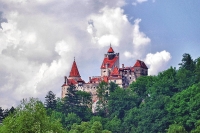
Bran Castle
Often referred to as 'Dracula's Castle', the fortified medieval Bran Castle is a national monument and landmark of Romania. Looking exactly as a vampire count's lair should, the fo…
Bran Castle
Often referred to as 'Dracula's Castle', the fortified medieval Bran Castle is a national monument and landmark of Romania. Looking exactly as a vampire count's lair should, the forbidding façade, towers and ramparts rise out of the forest, perched high on a steep cliff face against a dramatic mountain background. Despite its aesthetic, there is little evidence to suggest Vlad Tepes, the speculated inspiration for Dracula, ever lived there. Bran Castle was built between 1377 and 1388 to protect nearby Brasov from invaders. The rooms and towers surround an inner courtyard with a sculpted stone fountain. A warren of narrow, winding stairs, secret chambers and underground passageways lead between vaulted halls, a prison, a living area and watchtowers with sweeping views. The rooms are decorated with a collection of Baroque furniture, elaborately carved four-poster beds, weapons and armour dating from the 14th to 19th centuries. A fascinating site, visitors should have this near the top of their Romanian to-do list.
Website www.bran-castle.com
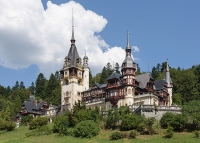
Peles Castle
The quintessential fairytale castle, complete with turrets and surrounded by mystical forests, the neo-classical Peles Castle was the summer residence of Romania's kings, and makes…
Peles Castle
The quintessential fairytale castle, complete with turrets and surrounded by mystical forests, the neo-classical Peles Castle was the summer residence of Romania's kings, and makes for a highly popular tourist attraction. Built by King Carol I in 1883, the castle is a masterpiece of German new-Renaissance architecture, its exquisite form framed by fir forests and the towering peaks of the Carpathian range. The castle's 160 rooms are lavishly decorated in ebony, mother of pearl, walnut, and leather, with crystal chandeliers, fine collections of sculptures, paintings and tapestries, and stained-glass windows and furniture. It is set within a large park with a statue garden in front. Further up the hill from the main palace is the smaller Pelisor Palace, built for Carol I's nephew and heir, and decorated in the Art Nouveau style.
Website www.peles.ro
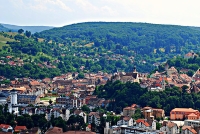
Sighisoara
Sighisoara is a beautifully preserved medieval town, renowned as the birthplace of 'Dracula', or Vlad the Impaler. It is also a UNESCO World Heritage Site and one of the seven fort…
Sighisoara
Sighisoara is a beautifully preserved medieval town, renowned as the birthplace of 'Dracula', or Vlad the Impaler. It is also a UNESCO World Heritage Site and one of the seven fortified towns founded by the Saxons in the hills of Transylvania. The hilltop citadel dominates the town, with the original medieval settlement enclosed within the fortress walls, surrounded by nine surviving towers. Visitors will love exploring the old town, with its narrow cobbled streets and steep alleyways, brightly-painted lopsided houses, ancient churches, stone archways and covered stairways, all of which are watched over by the striking Clock Tower. At the foot of the Clock Tower is the simple yellow building where Vlad was born and lived with his father, Vlad Dracul. Marked by a hanging wrought-iron dragon, it now houses a restaurant with medieval furnishings.
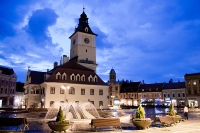
Brasov
Nestled at the foot of Mount Tâmpa is the charming medieval town of Brasov which, being one of the seven fortified towns settled by the Saxons, has a distinct Germanic flavour to …
Brasov
Nestled at the foot of Mount Tâmpa is the charming medieval town of Brasov which, being one of the seven fortified towns settled by the Saxons, has a distinct Germanic flavour to its history and culture. The Saxons built massive stone walls and seven bastions around the city that are still visible today, as well as ornate churches, elaborately trimmed buildings, and a fine central square that is said to be where the legendary Pied Piper led the children of Hamlin. Lining the square are the red-roofed merchant's houses, now occupied by cafes and shops surrounding the 15th-century Old Town Hall. The town's landmark is the impressive Gothic structure known as the Black Church, so named because a fire blackened its outer walls in 1689. Many tourists use Brasov as a base for visiting the nearby attractions such as Dracula's Castle at Bran, Râsnov Castle and the ski resorts of Sinaia and Poiana Brasov.
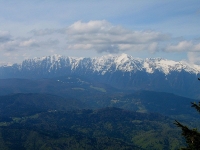
Sinaia
Known as the 'Pearl of the Carpathians' for its beautiful mountain scenery, Sinaia is nestled in the Prahova valley, surrounded by the snow-covered peaks of the Bucegi Mountains. I…
Sinaia
Known as the 'Pearl of the Carpathians' for its beautiful mountain scenery, Sinaia is nestled in the Prahova valley, surrounded by the snow-covered peaks of the Bucegi Mountains. It is also the setting for Peles Castle, a beautiful creation in the German new-Renaissance style, and considered to be one of the finest castles in Europe. With the construction of the castle as a summer residence for King Carol I, the little hamlet became an exclusive aristocratic resort and today is filled with holidaymakers who come to walk or ski in the mountains. The Sinaia Monastery behind the Orthodox Church has a small museum displaying some of the town's treasures, including a beautiful 1668 bible translated into Romanian using the Cyrillic alphabet. The resort also boasts a 17th-century monastery with original frescoes, and the small Pelisor Palace.



